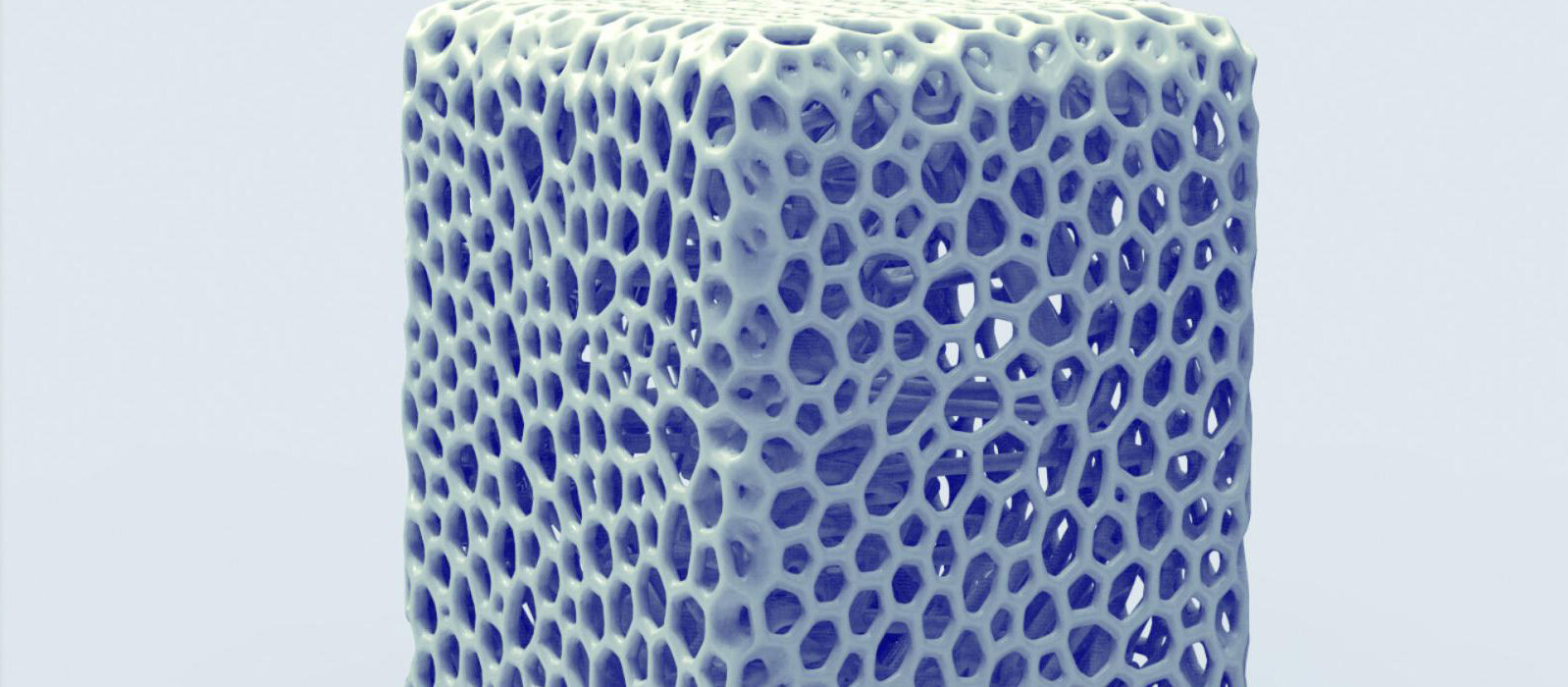Fossil fuels powered the industrial revolution, but innovations in chemistry played the key role in making materials stronger, cheaper and more convenient. In the twentieth century, fossil fuels (petrochemicals) served as the inputs for the invention of synthetic materials from plastics to polyester and beyond. These synthetics are now ubiquitous in modern industrial society, having replaced many natural, biologically based materials. However, many 21stcentury innovations in materials science are taking a step back to nature and finding amazing and valuable properties in biological products. Research on eggplants, wood, carrots and bacteria are proving the value of the new science of biomimetics. Integrating biological with synthetic technology is critical to long term sustainability and the preservation of life on earth!

Bio Thermal
Last April, in The Eggplant: Another Hi-Tech Miracle, I highlighted the amazing thermal properties of the eggplant. Researchers at PPG Industries found that the deeply pigmented skin of the eggplant contain microstructures that let infrared rays pass through the skin. The infrared rays, a source of heat, are reflected by the white flesh, keeping the eggplant cool even in hot sunlight. By copying this process, dark-colored coatings can be applied to airplanes, allowing them to stay cool when sitting in the hot sun. This invention is an example of “biomimetics” — finding a solution in nature to a modern engineering challenge.
Bio Plastic
Perhaps the most ubiquitous of synthetic materials is plastic, a category of petrochemical material that relies on long-chain polymers for stability, strength, flexibility and adaptability to a wide variety of uses. Convenient plastic pellets can be shipped anywhere and dropped into modular extrusion machinery or molds, and now 3-D printers. These machines can then create virtually any conceivable product in colors, sizes and shapes meeting any specification. While the manufacture and use of plastic materials is cheap and convenient, we have learned that managing the full life cycle of plastic is terribly difficult. Plastic fibers have been found in 83% of the world’s and 94% of US sampled tap water supplies. (See: Plastic Fibres Found in Tap Water) The plastic gyre in the Pacific ocean, commonly referred to as the ‘Great Pacific Garbage Patch’ has recently been found to be much larger and growing more quickly than previously thought. (See: GPGP Is Rapidly Accumulating Plastics)
New research suggests that lignin, a waste byproduct of paper manufacturing, has excellent properties as a polymer and can serve as a replacement for plastic. In 2008, a German company announced the successful manufacturing of figurines, toys, and boxes from a bio-plastic trade-named Arboform. The source material is a liquid derived from wood pulp-based lignin, which can be mixed with natural fibers and additives such as wax to create a strong, nontoxic alternative to petroleum-based plastic. According to the researchers, the “liquid wood” combines the high stability and good acoustical properties of wood with the injection-molded capabilities of plastic.
Earlier this year, in 2018, the Scandinavian pulp and paper giant Stora Enso announced a “wood-based biocomposite as a replacement for plastic”, manufactured in the form of pellets. While the announcement did not specify the components, it’s reasonable to expect that lignin polymers are a key ingredient. Several months earlier, Stora Enso had released a lignin-based replacement for oil-based phenolic materials used in resins. In that announcement, they stated “We believe that everything made from fossil-based materials today, can be made from a tree tomorrow.
While these biologically sourced materials will not solve all the challenges with plastic, they do demonstrate the very high value of biological materials as long-term, sustainable replacements for synthetics.
Bio Wood: Strong as Steel
Wood fibers also have other remarkable properties. Just as they enable the mighty oak tree to hold its heavy branches and extensive canopy aloft for centuries, they have given strength, flexibility and durability to building materials for human homes and structures. The porosity and resilience of wood means it is relatively light and flexible compared to building alternatives such as brick and stone. But it is also not as strong, and less rigid, than another very common building material – concrete. Concrete, particularly when reinforced with steel, has allowed human structures of enormous size and height. That competitive advantage may soon change.

Earlier this year, a team of scientists announced a process by which wood can be “densified.” They demonstrated that by heating and compressing normal wood they could produce “superwood”, a building material 10 times stronger and tougher than normal wood. In fact, the superwood proved to be bulletproof, with fired projectiles lodging in the compressed fibers. Given that the material is as strong as steel but six times lighter, researchers speculate it “could be a competitor to steel or even titanium alloys… comparable to carbon fibre, but much less expensive.” They note that the strengthening is the result of hydrogen bonding of the naturally occurring nanofibres of cellulose in the structure of the wood.
Carbon nano-materials have received a lot of attention since they were discovered in 1991. As noted in an online summary of carbon nanotube research, “These functional nanoscale materials have a variety of unique, fascinating, and never seen before properties. In fact, a 4th state of matter was recently discovered as water trapped inside a carbon nanotube doesn’t act as a solid, liquid, or gas.” Significantly, the raw material for carbon nanotubule research is graphite, a naturally occurring mineral formed in petrochemical deposits. We can understand the excitement of carbon researchers about the new findings, but the fact is, even the carbon nanomaterials being studied originated in biological material growing millions of years ago.
Carrots For Bio Concrete.
Scientists seeking to make building materials stronger have also been looking for nanomaterials in other biological sources – including carrots. Recent research has identified some remarkable properties in cellulosic nanoplatelets derived from waste carrots and beets. Nanoplatelets are flat sheets or “plates” of material, small enough that they have to be measured in nanometers (nm = one-billionth of a meter). Carrots and beets build cellulosic nanoplatelets in their tissues as integral structural components. It is a common practice to use steel reinforcement bars with concrete to increase strength and flexibility. Vegetable nanoplatelets can do even better.
The researchers extracted vegetable nanoplatelets and added them to concrete, and then compared the results to commercially available cement additives. They found that the vegetable nanoplatelet supplements significantly out-performed commercially available cement additives, including graphene and carbon nanotubes, at a much lower cost. Their composites were superior in mechanical performance and used smaller amounts of cement. The composites also had a denser microstructure, important for corrosion protection and lifespan. In addition to the structural advantages, the plant-based composite would significantly reduce both the energy consumption and CO2 emissions associated with cement manufacturing.
Bio Self-Healing
Strength, resilience, weight, cost and longevity are all important in concrete manufacturing. But, over time, all concrete begins to deteriorate, and microscopic cracks tend to accelerate the process. The engineering challenge of trying to heal concrete in place has been solved by an unlikely collaborator – bacteria. In 2015, researchers evaluated concrete self-healing using a variety of bacteria. They selected alkaline-tolerant bacterial strains that produced calcite, and tested them by adding bacterial spores to concrete samples. They found the bacteria enhanced the compressive strength of the concrete, and they observed complete healing of cracks. Bacteria enhanced concrete may be on the market soon, but it may also have a competitor. Researchers are also studying the potential for self-healing concrete using fungus.
The Bio Synthetic Dialectic
The twentieth century brought a synthetic revolution. While concrete and some metals had been around for millennia, and steam power for a couple of centuries, most human daily needs for food, medicine, energy, clothing, transportation and built goods had relied on natural, biological sources. As the quality and ubiquity of synthetic products increased through the century, it seemed that these technological marvels were superior, cleaner, faster, more efficient and more convenient than the natural counterparts. Nature, and biology, in comparison, seemed messy, confusing, disorganized and inefficient. Scientists told us that most of our DNA was junk – that 90% of the electrical activity in our brain was noise – that all bacterial contamination was bad – and that old wives’ tales, ancient folk medicine and religion were all just superstition. For the most part, we believed them.

Twenty-first century science is changing that. We are in the midst of a biological scientific revolution. As science gets better, we continue to find that nature is more sophisticated, more efficient, more complex and more organized than we had ever imagined. Our attitude about synthetic being more advanced than biological was a function of ignorance, not superior knowledge. We have had to re-evaluate our junk DNA, our brain electrical functions, our micro biome and the efficacy of so-called non-western medicine, as well as the incredibly sophisticated material properties of living things. It is humbling to admit that we still have a lot to learn from nature. Biology, after all, worked out many tricky engineering solutions in 3.5B years of evolution.
In that re-evaluation process, we need to integrate the biological and the synthetical. Such integration will yield a more comprehensive and holistic understanding of the world we live in, and a deeper appreciation for the way we live in it. Both are essential to our long-term survival.

















